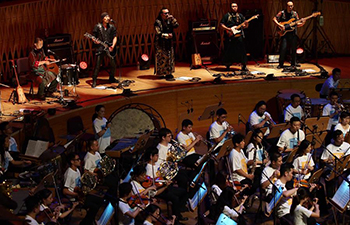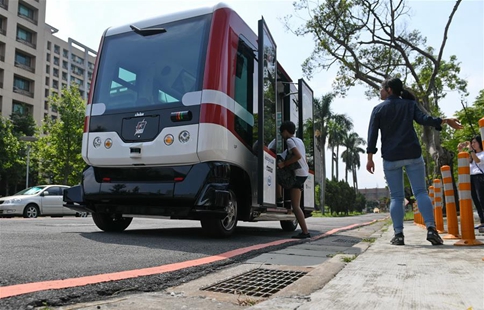WASHINGTON, July 10 (Xinhua) -- While industrial robots are predicted to replace millions of U.S. workers and suppress wage growth in the next decade, reforms in education and social safety net largely lag behind, said a renowned U.S. economist.
"There's a real mismatch between our institutions and the technologies coming on board," Daron Acemoglu, an economist at Massachusetts Institute of Technology (MIT), told Axios Media, an American news website, in an interview published on Sunday night.
Industrial robots have taken over routine work from human hands in the past several decades. A paper published in March by Acemoglu and Pascual Restrepo, an economist at Boston University, estimated that the U.S. had already lost between 360,000 and 670,000 jobs to robots since 1990.
"Economists are trained to think of technology as always increasing employment and raising wages," said Acemoglu, "but there's no theoretical justification for believing this."
Technological unemployment outlook is even gloomier, as robots are now replacing jobs at a much faster pace than before, thanks to technological advancements in automation, robotics and artificial intelligence.
The International Federation of Robotics (IFR) estimates that there are currently between 1.5 million and 1.75 million industrial robots in operation, and the number could increase to 4 million to 6 million by 2025.
In an aggressive scenario which presumes a faster spread of robots in the manufacturing sector, Acemoglu estimates that industrial robots will lead to a 0.94 to 1.76 percentage points lower employment to population ratio and 1.3 percent to 2.6 percent lower wage growth between 2015 and 2025.
In a more conservative scenario, the impacts equal to a reduction of 0.54 to 1 percentage point decline in the employment to population ratio and 0.75 percent to 1.5 percent lower wage growth.
Even under the conservative scenario, there will be about 1.7 million to 3.2 million U.S. workers who could lose their jobs to robots in the next 10 years.
Acemoglu is not alone in warning the future of technological unemployment. Carl Frey and Michael Osborn, two economists at Oxford University, predicted that 47 percent of U.S. workers were at risk of automation over the next two decades in a paper released in 2013.
Using a related methodology, McKinsey, a consultancy, put the same number at 45 percent, while the World Bank estimated that 57 percent of jobs in the OECD could be automated over the next two decades in a 2016 report.
However, there are also economists who disagree with such pessimistic predictions. David Autor, an MIT economic professor, persuasively pointed out in a 2015 paper that U.S. employment-to-population ratio rose steadily during the 20th century even when alarm bell of automation jobless was rang from time to time.
According to Autor, pessimists are inclined to overstate the impact of automation substituting for labor, and underestimate the fact that automation also complements labor which leads to higher economic output and higher demand for labor.
The best example is the invention of Automated Teller Machines (ATMs). ATMs were introduced in the 1970s, and their numbers quadrupled between 1995 and 2010 in the United States. Bank teller employment, however, rose steadily from 1920 to 2010.
The reason for the inconceivable phenomenon is that by reducing the cost of operating a bank branch, ATMs indirectly increased the demand for tellers as banks opened more branches.
However, both Autor and Acemoglu agree that automation has enduring and painful social repercussions, as low-end blue collars are more vulnerable to robots.
"We also document that the employment effects of robots are most pronounced in manufacturing, and in particular, in industries most exposed to robots; in routine manual, blue collar, assembly and related occupations; and for workers with less than college education," Acemoglu wrote in the paper.
Similarly, Autor found in his research that while jobs at the top of skill ladder grew even more rapidly between 1980 to 2010 than in the four decades prior, skilled blue-collar occupations shrank rapidly in the same period.
The impacts of automation on labor market are best epitomized by the yawning wage inequality and employment polarization.
"History is not uniform," said Acemoglu. Technological development tends to bring broad prosperity, but that is not a law of nature. "The industrial revolution didn't lead to higher wages for many years between 1760 and 1850," he said.
Without the rise of labor union and universal high school education, the benefits of technological developments in the 19th century could never reach to the low-end blue collars.
Therefore, education reforms aiming to provide necessary training for workers who lost their jobs to robots and a better social safety net are indispensable in relieving the pains automation inflicted on working class.

















